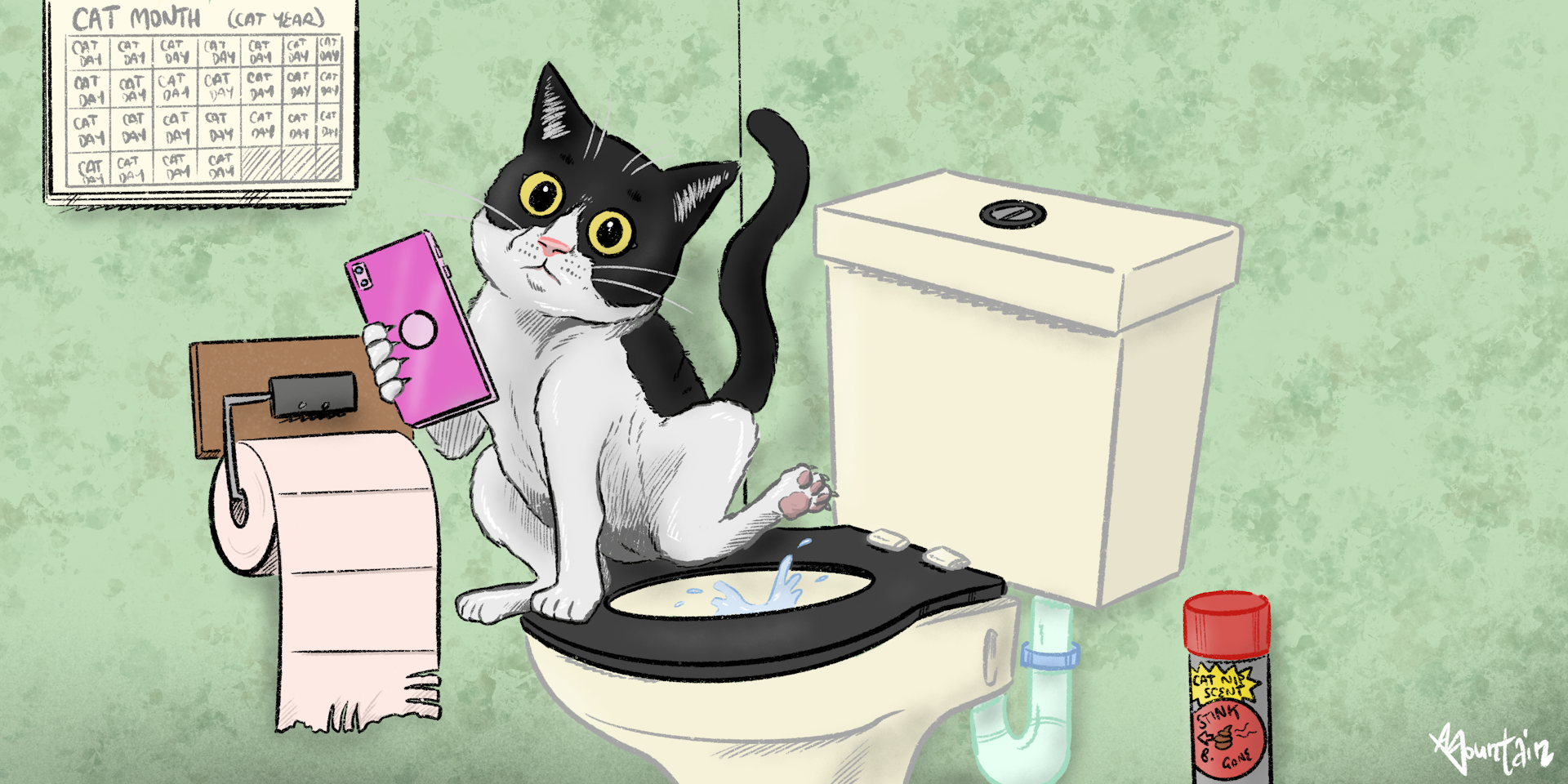Reasons You Must Never Flush Cat Poop Down Your Toilet - Critical Facts
Reasons You Must Never Flush Cat Poop Down Your Toilet - Critical Facts
Blog Article
The content which follows relating to How to Dispose of Cat Poop and Litter Without Plastic Bags is indeed insightful. You should take a peek.

Introduction
As cat proprietors, it's important to be mindful of just how we take care of our feline good friends' waste. While it may appear practical to flush cat poop down the commode, this method can have detrimental effects for both the environment and human wellness.
Alternatives to Flushing
Thankfully, there are safer and extra accountable ways to take care of feline poop. Think about the following choices:
1. Scoop and Dispose in Trash
One of the most common technique of getting rid of cat poop is to scoop it right into a biodegradable bag and toss it in the trash. Make certain to use a devoted clutter scoop and take care of the waste immediately.
2. Use Biodegradable Litter
Opt for naturally degradable cat clutter made from materials such as corn or wheat. These trashes are environmentally friendly and can be securely gotten rid of in the garbage.
3. Bury in the Yard
If you have a lawn, consider hiding pet cat waste in an assigned location away from veggie yards and water sources. Be sure to dig deep enough to avoid contamination of groundwater.
4. Mount a Pet Waste Disposal System
Buy a pet garbage disposal system particularly made for feline waste. These systems use enzymes to break down the waste, decreasing smell and environmental effect.
Health Risks
In addition to ecological problems, flushing feline waste can additionally pose wellness risks to people. Pet cat feces may consist of Toxoplasma gondii, a bloodsucker that can cause toxoplasmosis-- a potentially serious ailment, particularly for expecting ladies and people with weakened body immune systems.
Environmental Impact
Flushing pet cat poop presents hazardous microorganisms and bloodsuckers right into the water supply, posturing a considerable danger to aquatic environments. These contaminants can negatively impact marine life and compromise water top quality.
Final thought
Liable animal ownership expands past supplying food and sanctuary-- it additionally entails correct waste management. By refraining from purging cat poop down the bathroom and going with alternative disposal techniques, we can lessen our environmental impact and shield human health.
Why Can’t I Flush Cat Poop?
It Spreads a Parasite
Cats are frequently infected with a parasite called toxoplasma gondii. The parasite causes an infection called toxoplasmosis. It is usually harmless to cats. The parasite only uses cat poop as a host for its eggs. Otherwise, the cat’s immune system usually keeps the infection at low enough levels to maintain its own health. But it does not stop the develop of eggs. These eggs are tiny and surprisingly tough. They may survive for a year before they begin to grow. But that’s the problem.
Our wastewater system is not designed to deal with toxoplasmosis eggs. Instead, most eggs will flush from your toilet into sewers and wastewater management plants. After the sewage is treated for many other harmful things in it, it is typically released into local rivers, lakes, or oceans. Here, the toxoplasmosis eggs can find new hosts, including starfish, crabs, otters, and many other wildlife. For many, this is a significant risk to their health. Toxoplasmosis can also end up infecting water sources that are important for agriculture, which means our deer, pigs, and sheep can get infected too.
Is There Risk to Humans?
There can be a risk to human life from flushing cat poop down the toilet. If you do so, the parasites from your cat’s poop can end up in shellfish, game animals, or livestock. If this meat is then served raw or undercooked, the people who eat it can get sick.
In fact, according to the CDC, 40 million people in the United States are infected with toxoplasma gondii. They get it from exposure to infected seafood, or from some kind of cat poop contamination, like drinking from a stream that is contaminated or touching anything that has come into contact with cat poop. That includes just cleaning a cat litter box.
Most people who get infected with these parasites will not develop any symptoms. However, for pregnant women or for those with compromised immune systems, the parasite can cause severe health problems.
How to Handle Cat Poop
The best way to handle cat poop is actually to clean the box more often. The eggs that the parasite sheds will not become active until one to five days after the cat poops. That means that if you clean daily, you’re much less likely to come into direct contact with infectious eggs.
That said, always dispose of cat poop in the garbage and not down the toilet. Wash your hands before and after you clean the litter box, and bring the bag of poop right outside to your garbage bins.
https://trenchlesssolutionsusa.com/why-cant-i-flush-cat-poop/

I hope you enjoyed our article on How to Dispose of Cat Poop and Litter Without Plastic Bags. Thank you for taking the time to browse our content. Those who enjoyed our page if you please remember to pass it around. Thanks for your time. Don't hesitate to check up our blog back soon.
Get Estimate Report this page